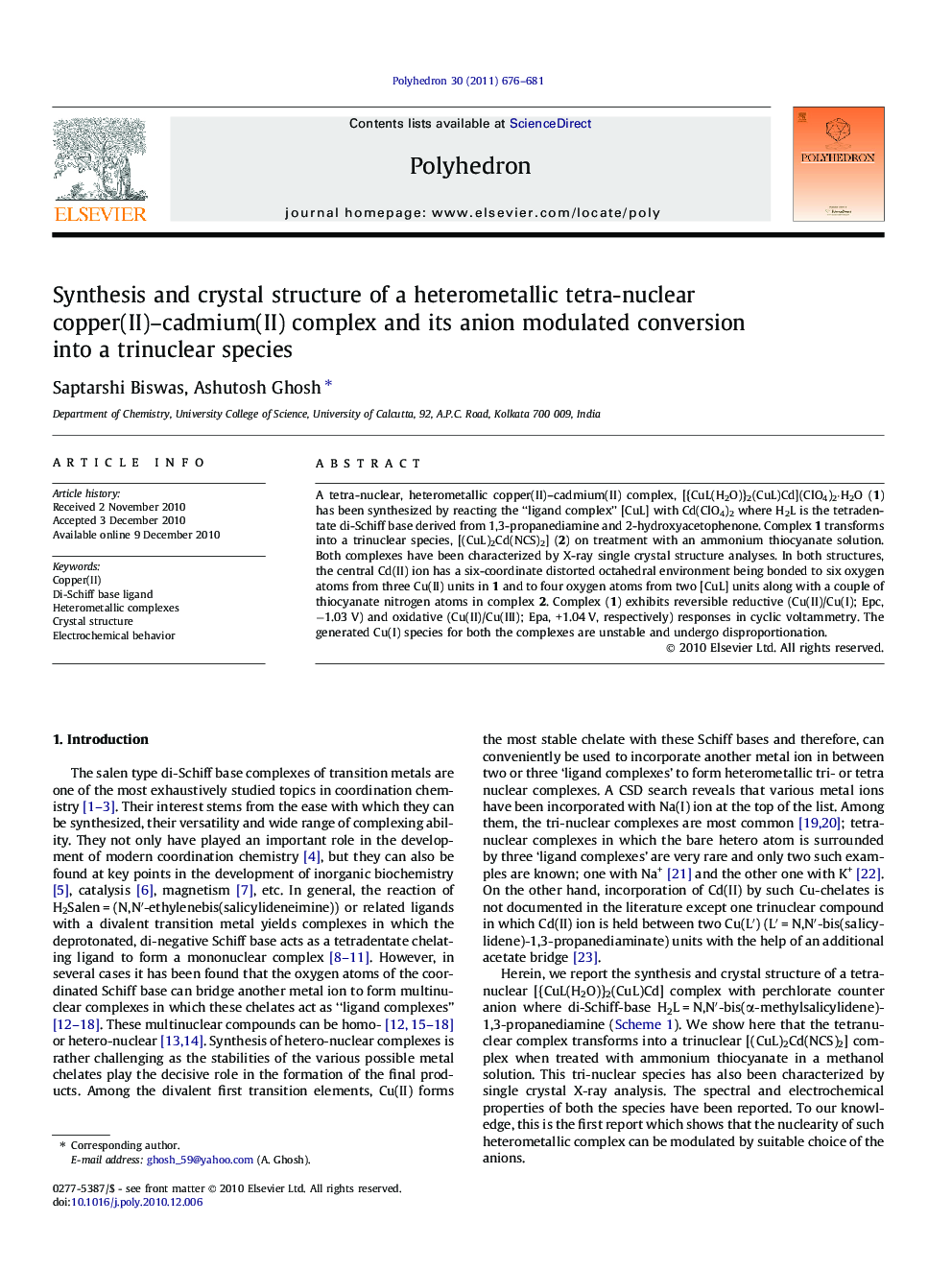| Article ID | Journal | Published Year | Pages | File Type |
|---|---|---|---|---|
| 1338367 | Polyhedron | 2011 | 6 Pages |
A tetra-nuclear, heterometallic copper(II)–cadmium(II) complex, [{CuL(H2O)}2(CuL)Cd](ClO4)2·H2O (1) has been synthesized by reacting the “ligand complex” [CuL] with Cd(ClO4)2 where H2L is the tetradentate di-Schiff base derived from 1,3-propanediamine and 2-hydroxyacetophenone. Complex 1 transforms into a trinuclear species, [(CuL)2Cd(NCS)2] (2) on treatment with an ammonium thiocyanate solution. Both complexes have been characterized by X-ray single crystal structure analyses. In both structures, the central Cd(II) ion has a six-coordinate distorted octahedral environment being bonded to six oxygen atoms from three Cu(II) units in 1 and to four oxygen atoms from two [CuL] units along with a couple of thiocyanate nitrogen atoms in complex 2. Complex (1) exhibits reversible reductive (Cu(II)/Cu(I); Epc, −1.03 V) and oxidative (Cu(II)/Cu(III); Epa, +1.04 V, respectively) responses in cyclic voltammetry. The generated Cu(I) species for both the complexes are unstable and undergo disproportionation.
Graphical abstractThe Cu(II) complex, [CuL] of the di-Schiff base ligand N,N′-bis(α-methylsalicylidene)-1,3-propanediamine (H2L) on reaction with cadmium perchlorate produces a tetrameric heterometallic complex [{CuL(H2O)}2(CuL)Cd](ClO4)2·H2O. This complex transforms into a trinuclear species [(CuL)2Cd(NCS)2] when ammonium thiocyanate is added to its methanol solution. Both the complexes are characterized structurally. Their spectral and electrochemical properties are reported.Figure optionsDownload full-size imageDownload as PowerPoint slideResearch highlights► Heterometallic tetra-nuclear CuII3–CdII complex. ► Anion modulated transformation of this tetranuclear complex into trinuclear one. ► Characterization by single crystal X-ray analysis. ► Spectral and electrochemical properties.
